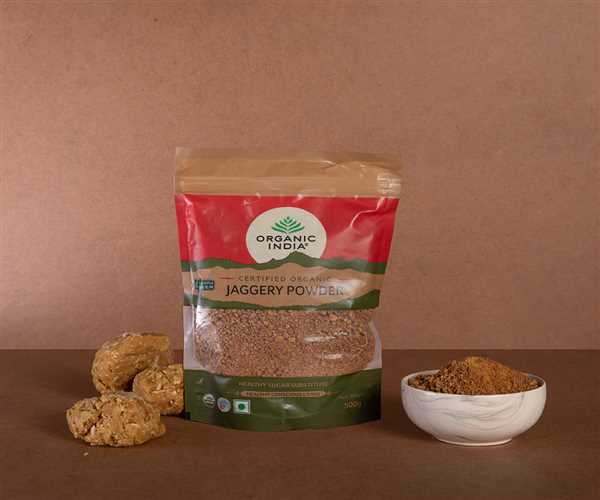Search here

19-Sep-2023 , Updated on 9/19/2023 4:44:22 AM
Is there any relation jaggery with diabetes improves?
Jaggery and Diabetes: Unraveling the Sweet Truth
Introduction
Diabetes is a chronic medical condition that affects millions of people worldwide. It's characterized by high blood sugar levels, which can lead to various complications if not properly managed. For individuals with diabetes, managing their sugar intake is crucial, and this often means avoiding foods high in refined sugars. One such alternative to refined sugar that has garnered attention in recent years is jaggery. In this extensive blog, we will delve deep into the world of jaggery, exploring its origins, composition, and its potential benefits and drawbacks for individuals with diabetes.
Table of Contents
- What is Jaggery?
- Definition and Origin
- Production Process
- Nutritional Composition of Jaggery
- Calories and Carbohydrates
- Vitamins and Minerals
- Antioxidants
- Glycemic Index (GI) of Jaggery
- Understanding the Glycemic Index
- Jaggery's GI and Its Implications for Diabetes
- Benefits of Jaggery for Diabetes
- Slow Release of Sugar
- Rich in Nutrients
- Potential Blood Sugar Regulation
- Drawbacks of Jaggery for Diabetes
- High Calorie Content
- Inconsistent GI Values
- Lack of Scientific Consensus
- How to Incorporate Jaggery into a Diabetic Diet
- Portion Control
- Pairing with Fiber-rich Foods
- Consultation with a Healthcare Professional
- Jaggery vs. Other Sugar Alternatives
- Jaggery vs. Refined Sugar
- Jaggery vs. Artificial Sweeteners
- Jaggery vs. Honey
- Conclusion
- Balancing Moderation and Health
- Personalized Approach to Diabetes Management
What is Jaggery?
Definition and Origin
Jaggery, also known as "gur" in India, is a traditional sweetener made from sugarcane juice or palm sap. Its history can be traced back thousands of years, with evidence of its use in ancient civilizations like the Indus Valley and in traditional Ayurvedic medicine. Jaggery is known for its distinct flavor, which is often described as earthy, caramel-like, and slightly smoky.
Production Process
The production of jaggery involves several steps, including the extraction of juice from sugarcane or palm trees, boiling, and solidification. Unlike refined sugar, which undergoes extensive processing and chemical treatment, jaggery is prepared using a natural and traditional method. This process helps retain some of its nutritional value.
Nutritional Composition of Jaggery
Calories and Carbohydrates
Jaggery is primarily composed of carbohydrates, with sugar being its predominant component. A 100-gram serving of jaggery contains approximately 383 calories, primarily derived from sugars. It is important to note that, like refined sugar, jaggery is calorie-dense, which means it can contribute to weight gain if consumed in excess.
Vitamins and Minerals
One of the advantages ofjaggery over refined sugar is its micronutrient content. It contains small amounts of essential minerals like iron, magnesium, potassium, and calcium. Additionally, jaggery provides some B vitamins, including niacin and riboflavin.
Antioxidants
Jaggery also contains antioxidants, which are compounds that help protect the body from oxidative stress and inflammation. These antioxidants can have potential health benefits, but their presence in jaggery is relatively low compared to other natural sources like fruits and vegetables.
Glycemic Index (GI) of Jaggery
Understanding the Glycemic Index
The Glycemic Index (GI) is a measure that ranks carbohydrate-containing foods based on how quickly they raise blood sugar levels. Foods with a high GI are rapidly digested and absorbed, causing a rapid spike in blood sugar, while those with a low GI are absorbed more slowly, leading to a gradual and sustained increase in blood sugar.
Jaggery's GI and Its Implications for Diabetes
The GI of jaggery can vary depending on factors such as the type of plant used (sugarcane or palm), the processing method, and its source. Generally, jaggery is considered to have a medium to high GI, with values ranging from 50 to 84 or higher. This means that jaggery has the potential to raise blood sugar levels more quickly than some other sweeteners, including table sugar.
Benefits of Jaggery for Diabetes
Slow Release of Sugar
While jaggery has a relatively high GI, it is often claimed to have a slower and more sustained effect on blood sugar compared to refined sugar. Some people with diabetes report that they experience fewer rapid spikes and crashes in blood sugar levels when consuming jaggery in moderation. This can be attributed to the presence of fiber and other compounds in jaggery that may slow down the absorption of sugar.
Rich in Nutrients
As mentioned earlier, jaggery contains essential minerals and vitamins, which can be beneficial for individuals with diabetes. Iron, for example, plays a vital role in the production of red blood cells and the prevention of anemia, a condition that can be more common in people with diabetes.
Potential Blood Sugar Regulation
Some studies suggest that certain compounds in jaggery, such as polyphenols and antioxidants, may have anti-inflammatory and insulin-sensitizing properties. However, more research is needed to fully understand these potential benefits and their impact on diabetes management.
Drawbacks of Jaggery for Diabetes
High Calorie Content
One of the significant drawbacks of jaggery for individuals with diabetes is its high calorie content. While it may offer some nutritional benefits, consuming it in excessive quantities can lead to weight gain, which is a risk factor for diabetes and can exacerbate the condition.
Inconsistent GI Values
The GI of jaggery can vary widely, as mentioned earlier, making it challenging to predict its exact impact on blood sugar levels. This variability means that some individuals with diabetes may experience significant spikes in blood sugar after consuming jaggery.
Lack of Scientific Consensus
While there is anecdotal evidence and some preliminary research suggesting potential benefits of jaggery for diabetes, there is a lack of comprehensive and well-controlled clinical studies to confirm these claims. The limited scientific consensus makes it difficult to provide clear guidelines for its use in diabetes management.
How to Incorporate Jaggery into a Diabetic Diet
Portion Control
If you choose to include jaggery in your diet, it is crucial to practice portion control. Small amounts of jaggery can be used as a sweetener in recipes or beverages, but overconsumption should be avoided.
Pairing with Fiber-rich Foods
To minimize the impact on blood sugar levels, consider consuming jaggery in combination with foods that are high in dietary fiber. Fiber can help slow down the absorption of sugar and promote better blood sugar control.
Consultation with a Healthcare Professional
Before adding jaggery to your diabetic diet, it is advisable to consult with a healthcare professional or a registered dietitian. They can provide personalized guidance based on your specific health needs and goals.
Jaggery vs. Refined Sugar
When comparing jaggery to refined sugar, there are some notable differences:
- Nutritional Content: Jaggery contains small amounts of minerals and vitamins, while refined sugar is devoid of any nutrients. Jaggery provides slightly more health benefits in terms of micronutrients.
- GI and Blood Sugar Impact: Jaggery may have a slightly lower GI compared to refined sugar, but it can still raise blood sugar levels significantly. However, some individuals report that they experience fewer fluctuations with jaggery.
- Processing: Jaggery is prepared using a more natural and traditional process, while refined sugar undergoes extensive chemical processing.
Overall, jaggery may have a slight advantage over refined sugar in terms of nutrients and potentially a slightly lower GI, but it is not a suitable substitute for individuals with diabetes. Both should be consumed sparingly.
Jaggery vs. Artificial Sweeteners
Artificial sweeteners are sugar substitutes that provide sweetness without adding calories or significantly affecting blood sugar levels. They are commonly used by people with diabetes. Here's how jaggery compares:
- Calories: Jaggery is calorie-dense, whereas artificial sweeteners are calorie-free.
- Blood Sugar Impact: Artificial sweeteners do not raise blood sugar levels because they are not metabolized like sugar. Jaggery, on the other hand, can affect blood sugar.
- Taste: Jaggery offers a more natural sweetness with its unique flavor, while some people find the taste of artificial sweeteners less appealing.
Artificial sweeteners are often recommended for people with diabetes because they do not raise blood sugar levels. However, individual preferences and dietary choices may vary.
Jaggery vs. Honey
Honey is another natural sweetener that people often consider as an alternative to sugar or jaggery. Here's how they compare:
- Composition: Honey is primarily composed of fructose and glucose, with some trace nutrients and antioxidants. It is similar to jaggery in terms of calorie content.
- GI and Blood Sugar Impact: Both honey and jaggery have moderate to high GI values. They can raise blood sugar levels, but the exact impact can vary among individuals.
- Flavor and Uses: Honey has a distinct flavor and is commonly used as a natural sweetener and in various culinary applications.
While honey and jaggery both have some nutritional benefits, they should be consumed with caution by individuals with diabetes due to their potential to raise blood sugar. It's essential to monitor blood sugar levels and adjust your diet accordingly.
Conclusion
In the complex world of diabetes management, understanding the role of jaggery is just one piece of the puzzle. Jaggery, with its unique flavor and potential health benefits, can be a part of a diabetic diet when used in moderation and with careful consideration.
The key takeaways from this extensive exploration of jaggery for diabetes are as follows:
- Moderation is Key: Regardless of its potential benefits, jaggery should be consumed in moderation by individuals with diabetes to avoid adverse effects on blood sugar levels and weight.
- Personalized Approach: Diabetes management is highly individualized. It is essential to consult with healthcare professionals or registered dietitians to create a dietary plan that aligns with your specific needs, preferences, and goals.
- Balancing Act: Balancing the desire for sweet flavors with the need to manage blood sugar levels requires careful planning and mindful eating. Alternative sweeteners like artificial sweeteners or small amounts of natural sweeteners like jaggery and honey can be integrated into a diabetes-friendly diet when done thoughtfully.
In the end, while jaggery may offer some potential advantages over refined sugar, it is not a miracle solution for diabetes. The foundation of diabetes management remains a well-balanced diet, regular physical activity, monitoring blood sugar levels, and, when necessary, medication as prescribed by a healthcare professional.

Senior Executive
I'm an experienced SEO mentor with a proven track record of optimizing websites for search engines. With a deep understanding of SEO strategies, I empower individuals and businesses to succeed in the digital landscape.
Join Our Newsletter
Subscribe to our newsletter to receive emails about new views posts, releases and updates.
Copyright 2010 - 2025 MindStick Software Pvt. Ltd. All Rights Reserved Privacy Policy | Terms & Conditions | Cookie Policy